Different types of ceiling lights and making the right choice for your home
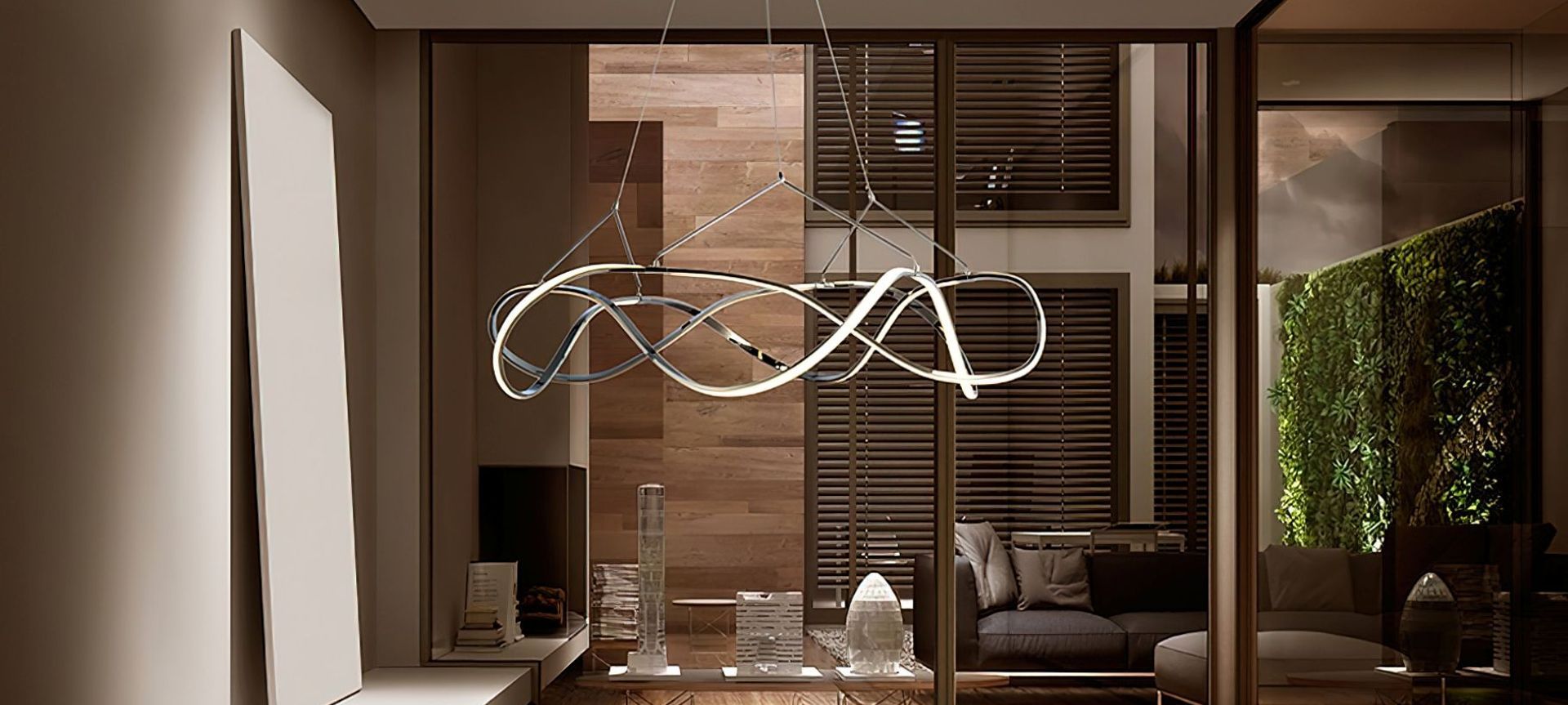
When you’re designing any space in your home, one of the most important decisions you'll make is your pick of ceiling light. In nearly all cases, it is the main source of ambient lighting impacting a room's functionality, usability and atmosphere. It can also be a very visible fixture and focal point, giving you all the more reason to make your first choice the right choice.
1. Downlights
One of the most versatile types of ceiling lights is downlights, which, as the name suggests, are lights that point downwards. Sometimes referred to as recessed lights, they can be used in a variety of different applications.
They are perhaps most frequently used for ambient lighting, a preferred choice in large rooms that need a cleaner, more minimalist feel. They can also be used as task lighting since you can place them over the areas like kitchen islands, that require stronger, more focussed lighting to help with duties like cleaning and prepping vegetables. Additionally, you can set them up as accent lighting to highlight special pieces of décor or furniture.
Related article: The Ultimate Guide to Downlights

2. Track lights
Track lights are a fantastic option when you need flexible task lighting or accent lighting. Track lighting consists of a series of multidirectional spotlights along a track on your ceiling. Some tracks are simple straight lines, while others create a more dynamic wave pattern. Although track lights can be positioned individually, they all run on the same circuit, meaning that they’ll turn off and on as one cohesive unit. They can be a fantastic way to highlight different areas without installing individual light fixtures for each. They can also provide a somewhat flexible task lighting setup that allows for a more dynamic room arrangement.
Related article: What is track lighting? Everything you need to know
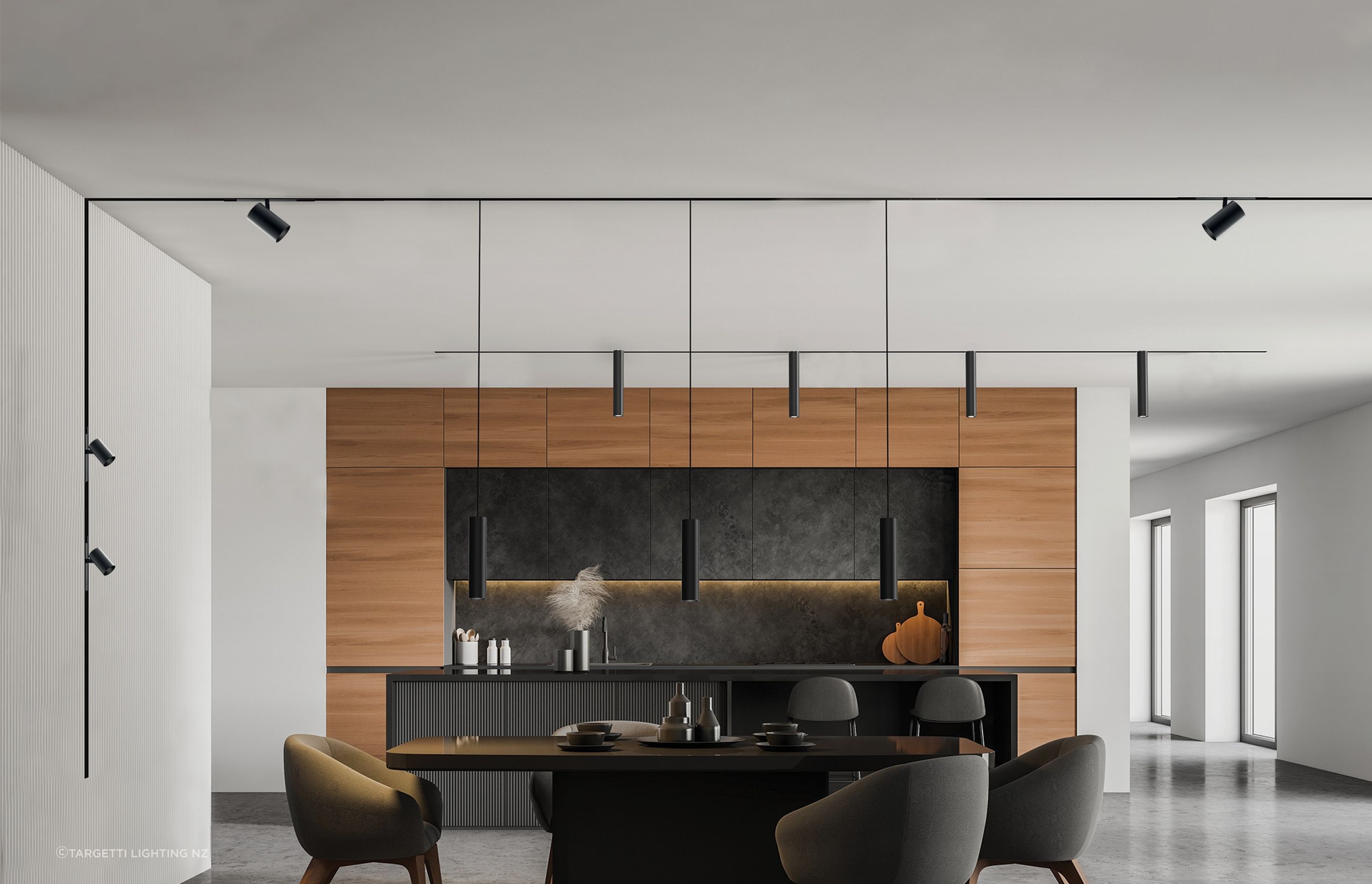
3. Pendant lights
Pendant lights are what most of us think of when we imagine a classic light fixture. These fixtures hang down from the ceiling on a chain or pole and generally provide ambient light. There are thousands of different pendant light styles to choose from, depending on what sort of look and feel you want in your home.
Pendant lights provide a definite style statement in your space, so you need to choose them carefully. You also need to consider the size of a space and your pendant light when you’re choosing your light fixture. A too-small fixture may look lost in an enormous space, and a too-big fixture may make an area feel cramped. It's a bit of a science, but get it right and it will elevate your room to another level.
Related article: Pendant lights — What are they and how to use them best
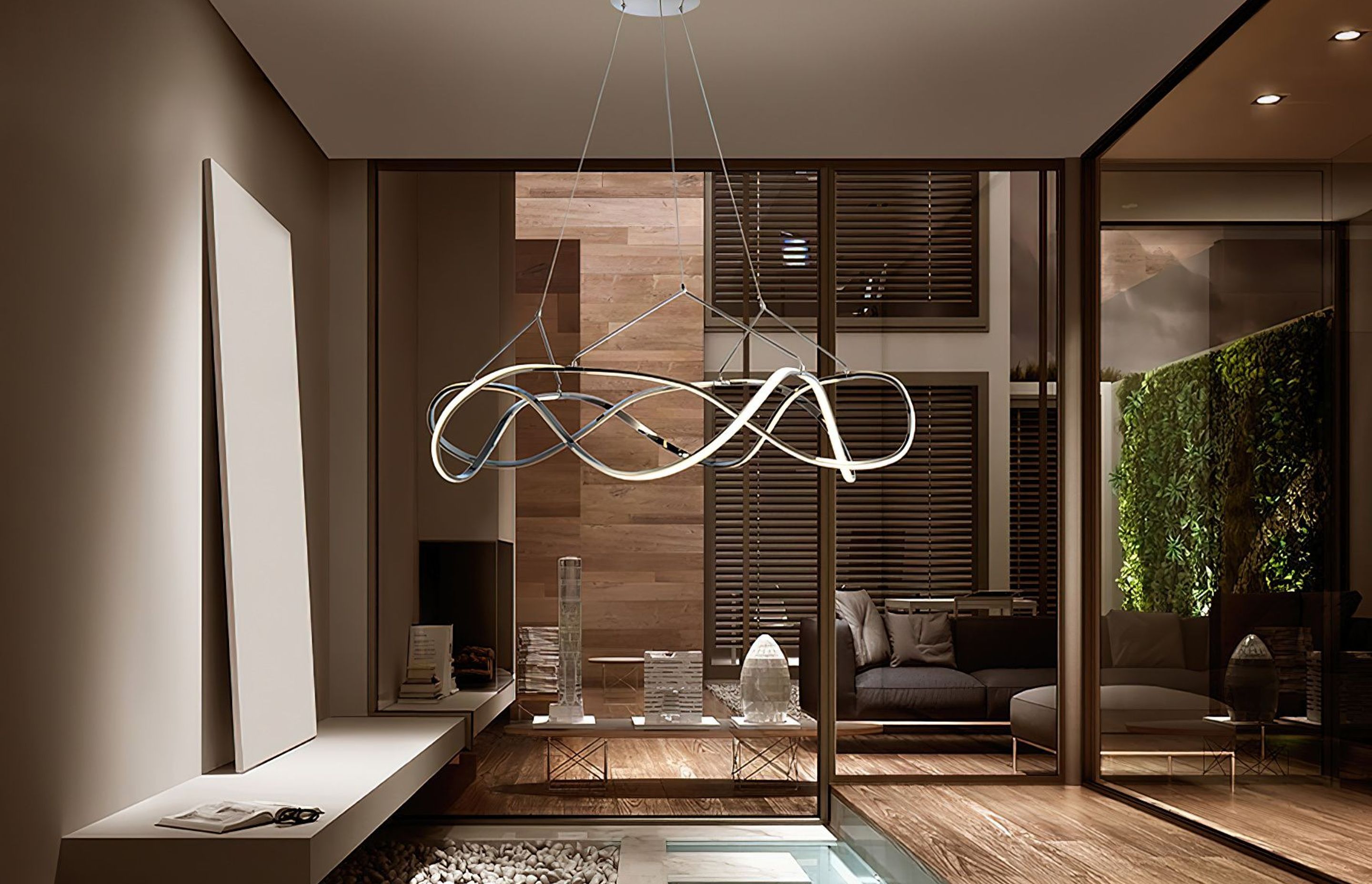
4. Spotlights
Spotlights are the best tool for the job when you want to highlight something. These lights can be recessed or surface mounted, but unlike downlights, the fixtures themselves can swivel, so the path of the light is customisable. You can choose exactly where you want illumination with absolute precision.
Spotlights are a great option for highlighting wall décor, such as art pieces, framed photos, or sculptures. They are primarily used for accent lighting, though they can work as task lighting, too. For example, if you install a spotlight over the area where you usually sit in the evenings to read, you’ll find yourself spending much less time squinting in the process.
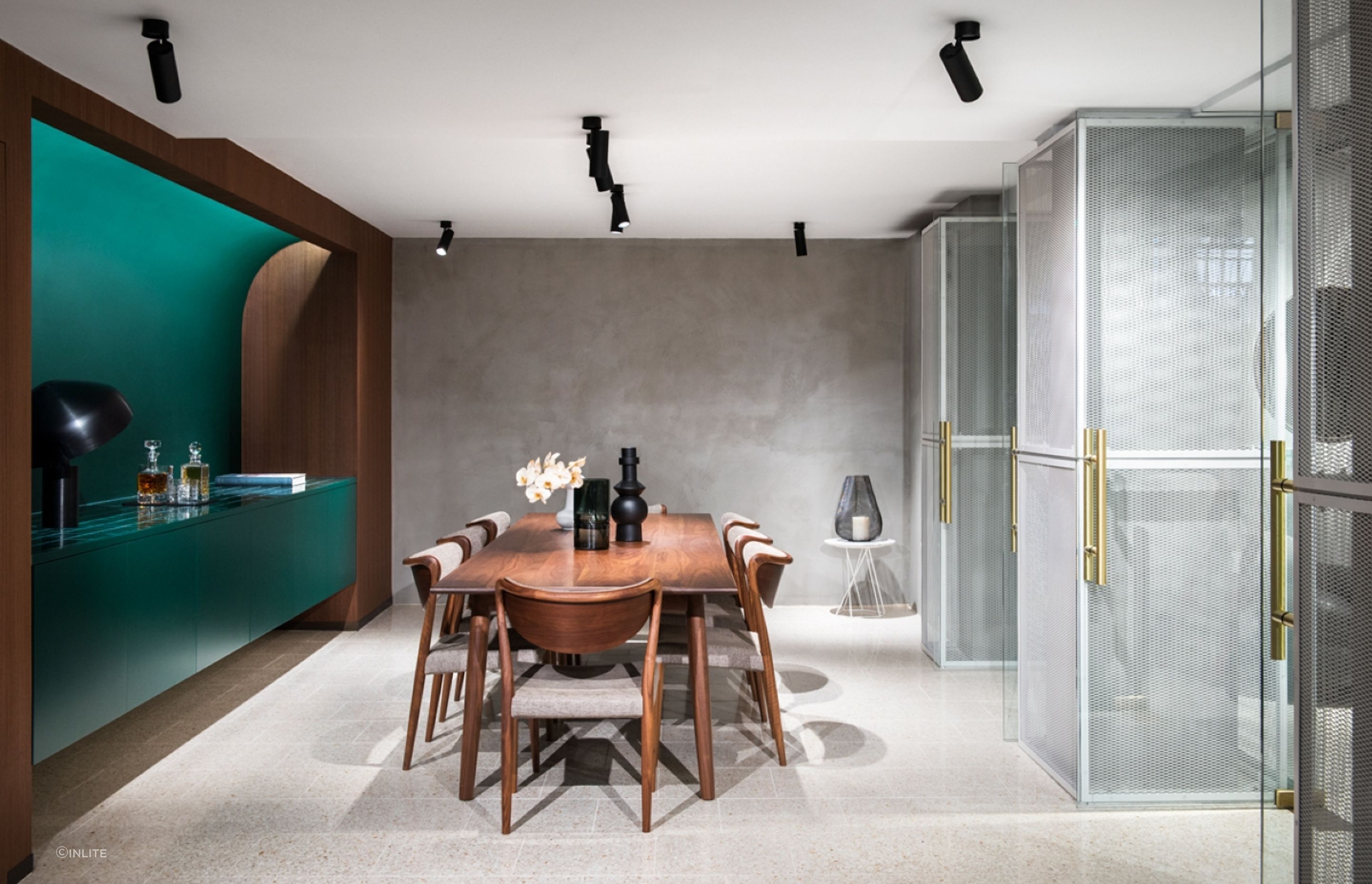
5. Linear lights
Linear lights consists of a series of small lights (usually LED) affixed to a continuous, single track. It means there are no dark spots between the light that the bulbs cast, so it’s great for creating a “wash” of light over surfaces, such as benchtops.
Linear lighting tends to have a somewhat more modern feel, though that varies widely by the fixture style and type or colour of light you choose. Like track lighting, these fixtures are all on the same circuit and so will turn on and off simultaneously. They are popular for kitchen islands, bars, dining tables and other areas that need long, thin illumination bands.
Related article: What is LED linear lighting? Benefits, FAQs and more
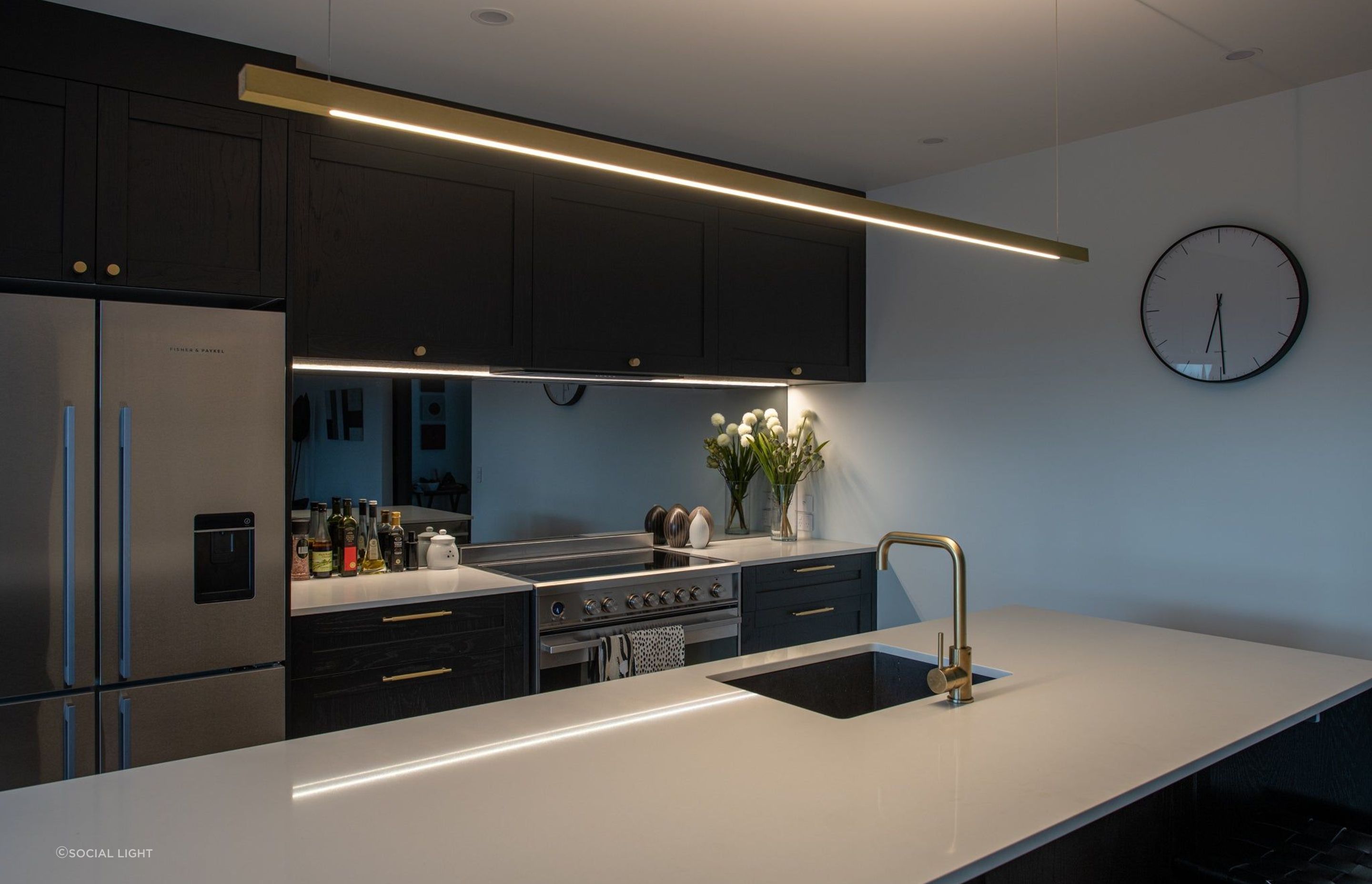
6. Flush mount lights
Flush mount lights are another popular form of light fixture for New Zealand homes. As you might guess from the name, flush mount fixtures sit flush with the ceiling at their base, rather than dropping down like pendant lights. However, unlike recessed lighting, these fixtures do not extend into the ceiling for no-profile illumination.
Flush mount fixtures can be every bit as much a design statement as pendant lights, depending on the style you choose. They can work well in smaller spaces and rooms with lower ceilings, which may be overwhelmed by the presence of a pendant light. They can also provide a more minimalist look if you choose a simple, small fixture that provides light but doesn’t attract attention.
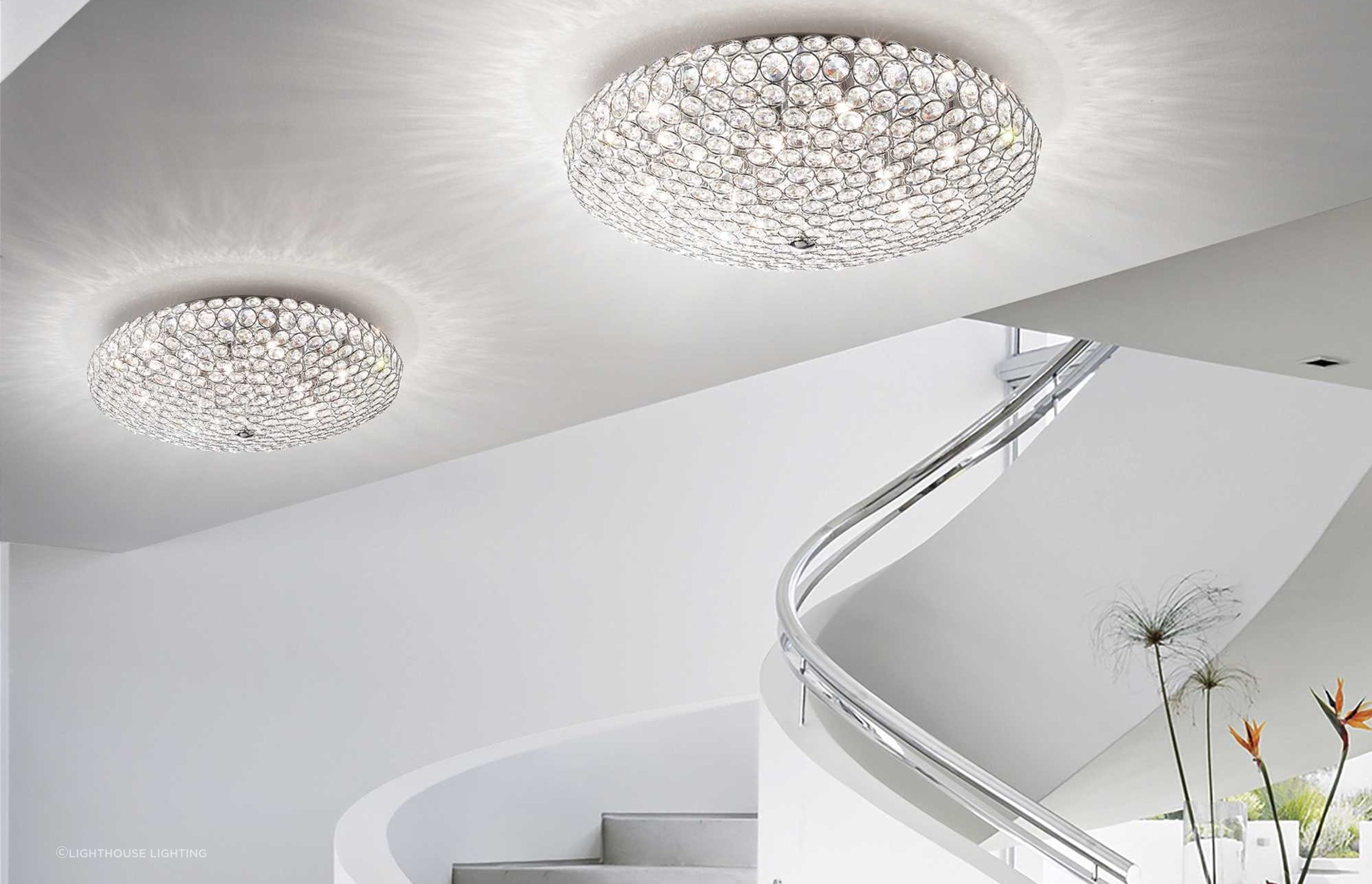
7. Semi flush mount lights
Semi-flush mount lights sit slightly suspended below the ceiling, typically with a small gap between the base and the light itself. In this sense, they are the middle ground between a pendant light and a flush mount light. Their design allows for a more open and layered look while still maintaining a compact profile.
In the home, semi-flush mount lights are an excellent choice for spaces with standard ceiling heights where a more dramatic hanging light might be overwhelming. They provide a good balance between functionality and style, offering sufficient illumination while adding a decorative element to the room. Their slightly elevated position also helps prevent glare and shadowing, ensuring a comfortable and well-lit environment.
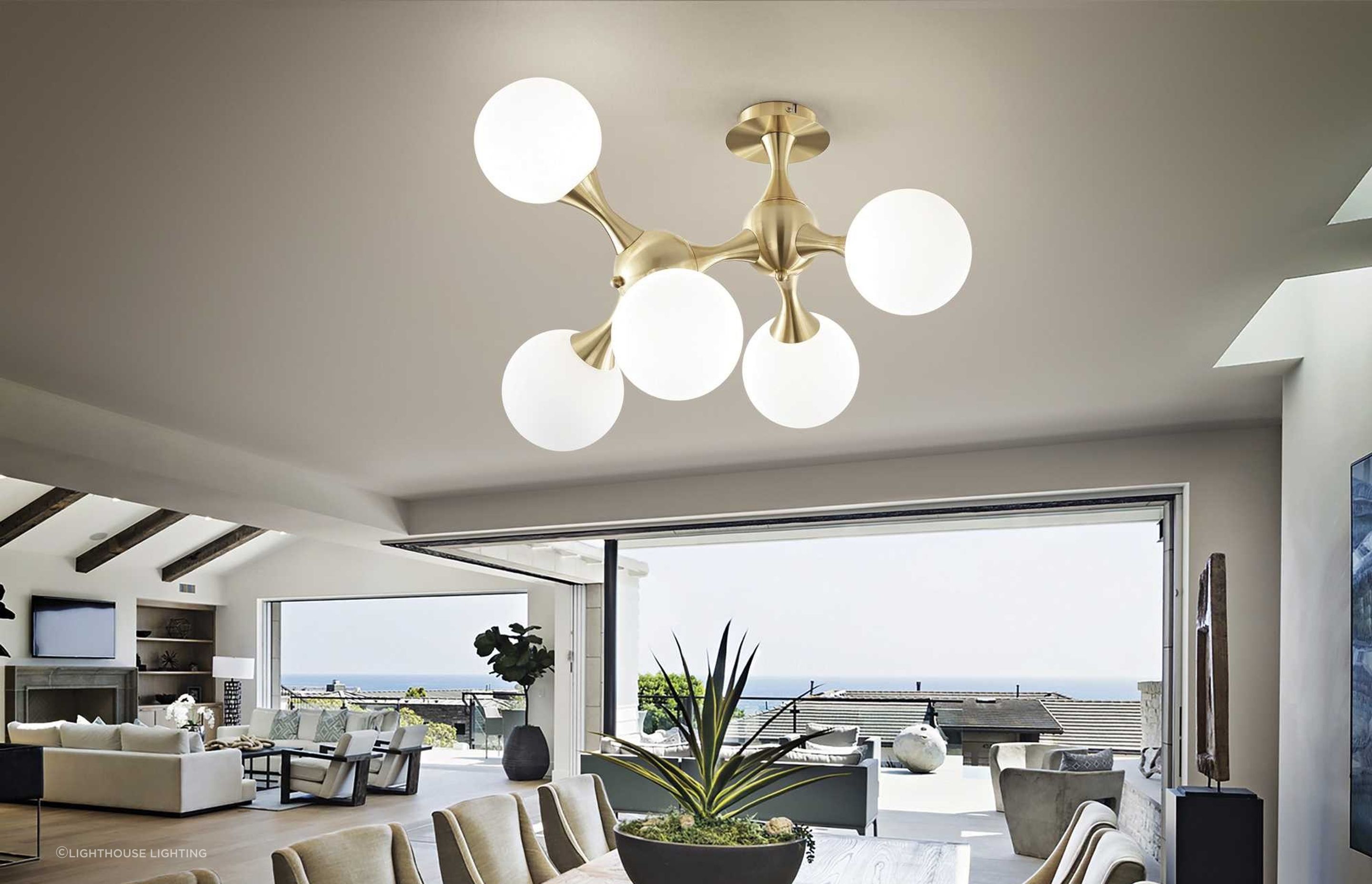
8. Chandeliers
Chandeliers are dazzling decorative light fixtures that hang from the ceiling, often featuring multiple arms or branches that hold small light bulbs. Traditionally associated with grandeur and opulence, they come in a variety of styles ranging from classic crystal designs to modern, minimalist forms. They are great a creating an effect of layered lighting that results in a soft, warm glow that enhances the mood.
Chandeliers are used to steal the show, serving as a focal point in a room, offering both illumination and artistic flair. Available in various materials such as glass, metal, and wood, they can be tailored to suit different aesthetics, whether you’re enhancing a traditional dining room or adding elegance to a contemporary living space.
Related article: Different types of lighting fixtures and how to use them
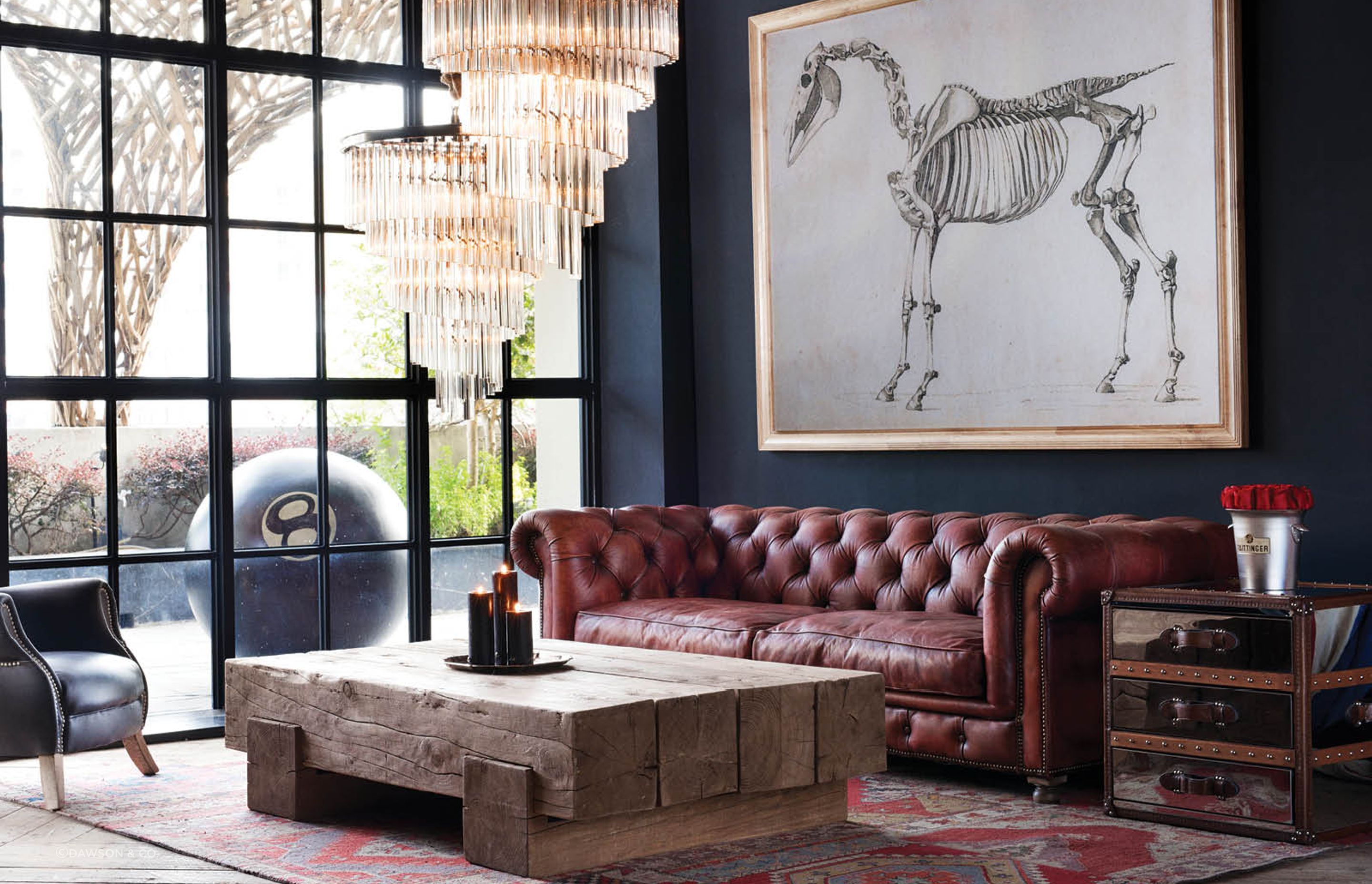
How to choose the right ceiling light for your space
Now that you have a decent grounding in all the different types of ceiling lights that you can find in New Zealand, the next step is to bring that knowledge together in a process to help you choose the right one for your space. These five steps below will help you do exactly that.
1. Assess your space and lighting needs
The first step in the process is to think carefully about the purpose of the room i.e. whether it's for mainly a space for relaxation, work, or entertaining. This will help you get in the right frame of mind about the mood you want to set. Think about the type of lighting you need — ambient for general illumination, task lighting for focused activities, accent lighting to highlight specific features or a combination of all of the above. The right solution may be more than one. The size of the room is also key, especially the ceiling height, and the amount of natural light already present. Larger spaces might require large or multiple fixtures, while rooms with low ceilings better suited to more modest designs.
2. Choose a suitable style and fixture type
From here you can start to look at lighting fixtures that complement the function of the room, such as flush mounts for areas with low ceilings, pendant lights for dining tables or kitchen islands, and recessed lighting for a clean, streamlined look. Next, match the lighting style to your home’s overall decor. For example, if you have a modern, contemporary style home a sleek and minimalist fixture often works well. However, if you live in a traditional villa, something ornate, like a chandelier, might be more stylistically suitable.
3. Consider light output and bulb type
It's important to be sure the light fixture will provide enough illumination by checking its lumen output, which should align with the room’s purpose. Prioritise energy-efficient LED bulbs, which come in various colour temperatures giving you flexibility to choose a warm white space for a cosy bedroom or cool white for a kitchen. Light dimmers are also very handy, giving you the ability to manipulate the level of light and mood of a space, depending on the occasion.
4. Pay attention to scale and placement
The size and placement of the ceiling light are crucial for functionality and styling. You'll want to choose a ceiling light fixture that's proportionately sized for the room it's in. For example, a pendant light should be two-thirds the width of the dining table beneath it when used in this way. Try to place light in a way that will maximise its usefulness, such as task lighting directly above spaces where the tasks in question take place or ambient lighting placed where it will distribute light evenly throughout a space.
5. Factor in budget and maintenance
Last but not least, plan your budget, including the upfront cost of the fixtures, the cost of installation from a reputable lighting installer and any additional features like switches and dimmers. On top of this, it pays to have at least some idea of the potential running costs (hence the energy-efficient LED bulbs) and what your ongoing maintenance requirements are likely to be, especially if you'll need a professional to change bulbs if they are in hard-to-reach spaces. The quality of the fixture itself is also a relevant factor here, as a poorly constructed option may be cheaper initially but won't be in the long run if it needs replacing sooner rather than later.
Related article: The Ultimate Guide to LED lights
Pick the best types of ceiling lights for your home
As you can see, there are many different types of ceiling lights to consider for your home, each with specific qualities and traits that can add value when used in the right way. Hopefully, you'll now have a good understanding of the fundamentals and enjoy the process of picking out the perfect solutions for your home.
(This article was updated on 4th December 2024)
Discover an extensive range of high-quality ceiling lights for your home on ArchiPro
